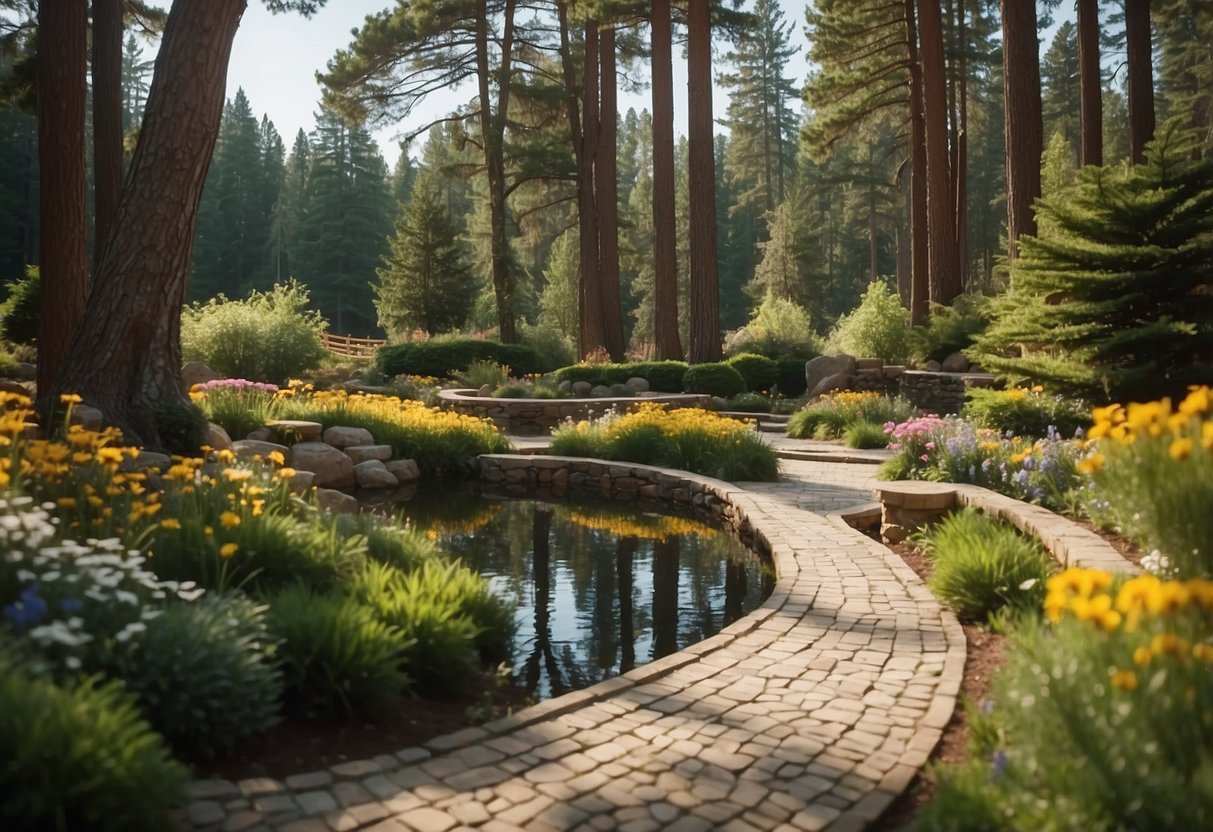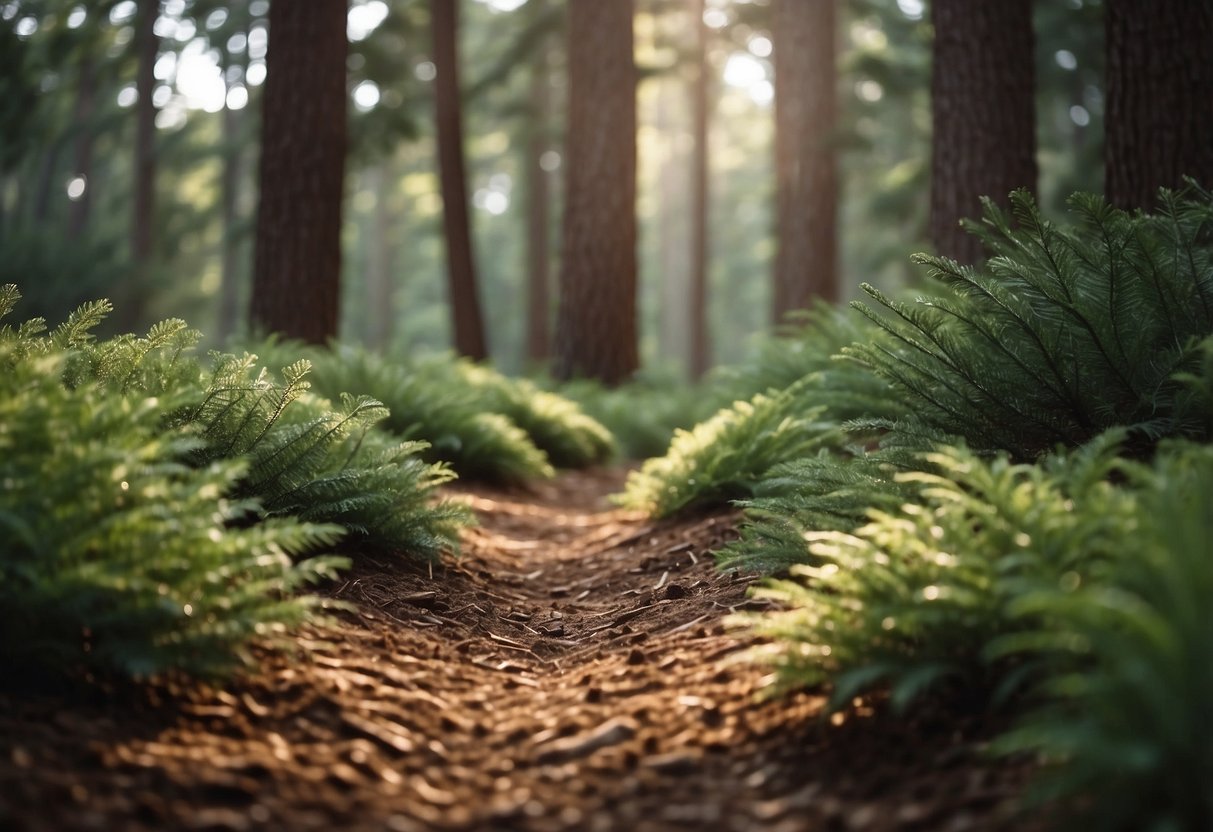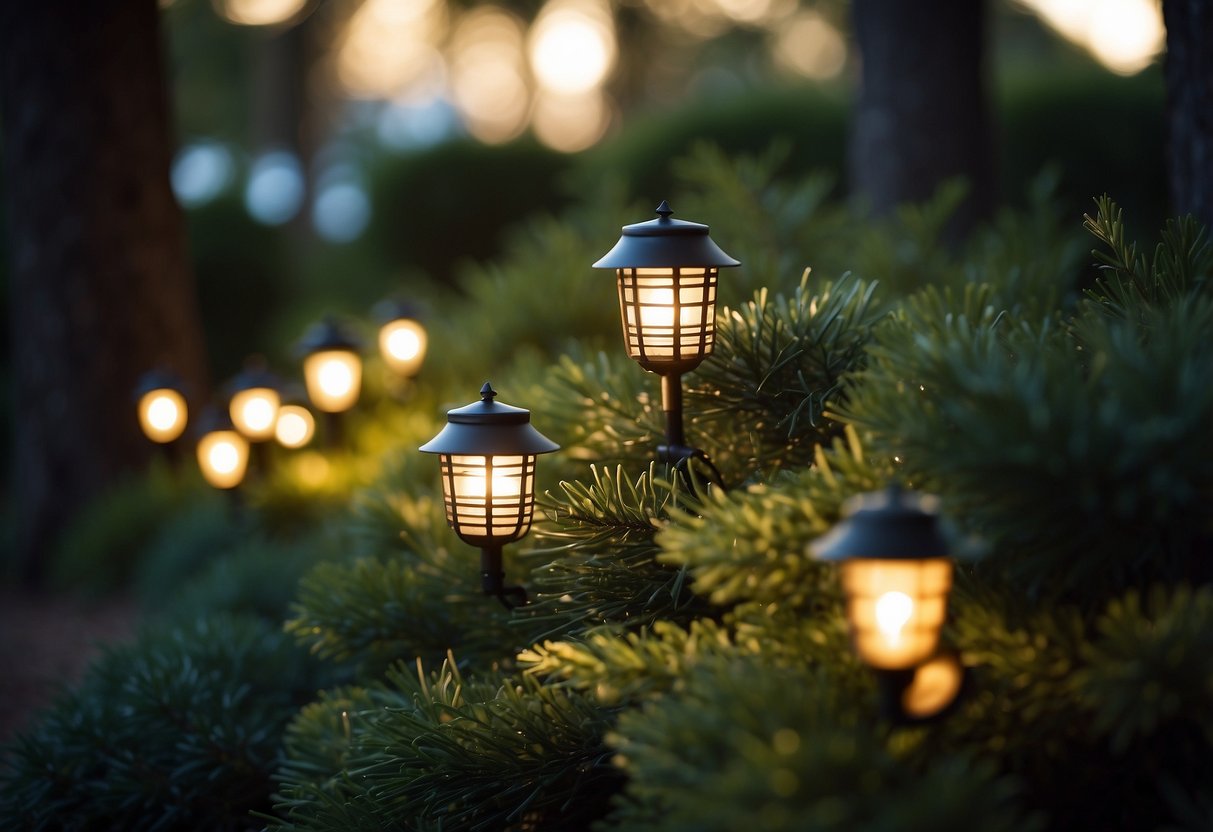Garden Ideas Under Pine Trees: Creative Tips for Shade-Loving Plants
Gardening under pine trees can turn a challenging spot into a lush and beautiful area in your yard. Pine trees create a unique environment with their shade and acidic soil, but you can still find plenty of plants that thrive there. With the right choices, you can create a vibrant and welcoming garden even under the canopy of pine trees.

As you explore garden ideas under pine trees, you’ll discover a range of plants suited for these conditions. Whether you’re aiming for a burst of color or a serene green space, there’s something for everyone. Start planning now to make the most of the space beneath your pine trees.
1) Plant Hostas

Hostas are a great choice for planting under pine trees. They thrive in the shade and can handle the acidic soil that pines create.
Before planting, mix compost and leaf mold into the soil. This helps retain moisture, which hostas need.
Water your hostas regularly with a slow soak or drip line. This helps them compete with the pine tree for water. Mulching every spring can improve the soil structure and keep it from drying out.
Hostas can bring lush, green foliage to the shady areas under your pine trees.
2) Add Ferns

Ferns are great for planting under pine trees. They thrive in shade and acidic soil, which is often found around pine trees.
Consider planting Christmas ferns. These ferns are evergreen and resilient. Their dark green fronds add a lush, textured look year-round.
You can also try adding other types of ferns like lady ferns or wood ferns. These varieties create a natural woodland feel under your pines. Ferns will make your garden vibrant and inviting.
3) Create a Moss Garden

Moss gardens are perfect for shaded areas under pine trees. Moss loves the acidic soil under pines and thrives with minimal care.
Begin by clearing the area of debris and other plants. This gives moss the best chance to spread and grow.
You can gather moss from other parts of the yard or buy it. Place the moss on the soil and press it down gently. Keep it moist until it’s established. Discover more about moss gardening in your yard here.
4) Install a Hammock

A hammock under pine trees can be very relaxing.
Pick two strong trees about 10-14 feet apart.
Wrap a rope or hammock straps around the trees at shoulder height.
Pull the straps snug and make sure they’re secure before hanging your hammock.
Once everything is set, you can enjoy a cozy spot in the shade.
For more detailed steps, check out Bob Vila’s guide.
5) Place Garden Benches

Placing garden benches under pine trees can create a peaceful retreat for you and your guests.
Look for sturdy benches that can withstand the elements. Wooden, metal, or stone benches are good options.
Arrange the benches in a spot where you can enjoy the shade and the view of your landscaped garden.
Consider adding a small side table nearby to hold drinks or books. This setup can make your outdoor space even more inviting.
6) Use Mulch Paths

Creating mulch paths can be a perfect way to beautify the area under your pine trees. Mulch helps retain moisture and keeps weeds at bay.
Spread the mulch evenly, avoiding the trunk, as it can cause bark to rot. Aim for a depth of 2-4 inches for the best results.
Using mulch paths provides a natural, woodland feel to your garden. It also makes it easier to walk around without disturbing the soil too much. For more detailed instructions on applying mulch, check out these helpful tips.
7) Plant Bulbs for Spring

Planting bulbs under your pine trees can bring bursts of color in the spring. Daffodils are a great choice. They thrive in the dappled light and well-drained, slightly acidic soil found under pine trees.
Tulips are another good option. They prefer a sunny spot but will do well in the filtered light under pines. Make sure you plant them in the fall for the best spring blooms.
Consider adding crocuses too. These small flowers are very hardy and can handle the conditions under pine trees. Their early blooms are a cheerful sign that spring has arrived.
8) Install Garden Lighting

Garden lighting can transform the area under your pine trees. It adds warmth and makes the space usable in the evening.
Use solar-powered lights to save energy. Place them along pathways and around key plants for a subtle glow.
Consider string lights for a magical touch. Wrap them around tree trunks or branches to create a cozy atmosphere.
9) Add Bird Feeders

Bird feeders bring life and color to your garden. Placing a bird feeder under pine trees can make your garden a haven for birds.
Use a seed tray to catch falling seeds and prevent mess. Consider adding mulch or stacked stones under the feeder to keep the area neat.
For an extra touch, hang some flowers or plants from the same post as the feeder.
10) Set Up a Rock Garden

Creating a rock garden under pine trees can be a great idea. Rocks and pebbles not only add beauty but also help with soil drainage.
Consider using pebbles like pea gravel or river rock. You can also add larger stones like boulders for a more dramatic effect.
A rock garden can easily thrive in the shade and acidic soil under pine trees.
Soil Preparation

Preparing soil under pine trees is crucial for the healthy growth of your garden. You’ll need to focus on understanding the specific needs of the soil and improving its drainage to ensure that your plants thrive.
Understanding Soil Needs
Soil under pine trees is typically acidic due to needle drop. Knowing the pH level is key. Most plants suitable for this environment prefer slightly acidic soils, with a pH around 6-7. Testing your soil will provide accurate pH levels.
Under pine trees, the soil might lack nutrients. Adding organic matter like compost or aged manure can boost nutrient content. Frequent check-ups are essential to maintain the balance.
Improving Drainage
Well-drained soil is critical for plant health under pine trees. Compacted soils common under trees restrict water flow and root growth. To improve drainage, you can aerate the soil using a garden fork or aerator.
Incorporate materials like sand or small gravel to enhance soil structure. Avoid heavy clay and ensure consistent moisture levels. Proper drainage prevents root rot and creates a healthy growing environment.
Shade-Tolerant Plants

Creating a beautiful garden under pine trees is possible with the right plants. These plants thrive in the shade and can create a visually appealing landscape. From delicate flowers to lush ground covers, here are some excellent options.
Flowers for Shaded Areas
Rhododendrons are a popular choice for shaded gardens with their vibrant blooms. These shrubs can add a splash of color without needing too much sunlight. They come in various colors, so you can mix and match to create a stunning display.
Daffodils also do well under pine trees. They are known for their bright yellow flowers in spring. These bulbs can be planted in clusters for a more natural look, making your garden lively and cheerful.
Lily of the Valley is another excellent flower for shaded areas. It has small, bell-shaped white flowers that emit a sweet fragrance. This plant spreads easily, forming a lush, scented carpet under your pine trees.
Ground Covers for Pine Tree Gardens
Japanese Pachysandra is perfect as a ground cover under pine trees. It is a shade-loving perennial known for its glossy green leaves and small white flowers. This plant is great for creating a dense, weed-suppressing carpet.
Christmas Fern thrives well in the shaded, acidic soil under pine trees. It’s an evergreen fern with dark green, leathery fronds that stay green through winter. This fern can grow up to 2 feet tall, adding texture and greenery to your garden year-round.
Mulching around your plants can help retain moisture and keep weeds at bay. It also improves soil quality over time. Choose acid-loving and shade-tolerant plants to ensure success, but make sure not to overwater. Keeping these tips in mind will help your under-pine garden flourish.
For more ideas, check out these shade-loving plants and ground covers that thrive under pine trees.
Creating Visual Interest

Adding layers of plants creates depth, while garden accessories enhance the aesthetic appeal under pine trees. Here are some ideas to help you achieve a vibrant and engaging garden.
Layering Plants for Depth
Layering plants adds complexity and beauty to your garden. Start with groundcovers like mosses or low-growing perennials, which thrive in the acidic soil typically found under pine trees. Examples include wildflowers and moss phlox.
Next, add medium-height plants such as ferns and shade-tolerant perennials. The Christmas fern is a great choice due to its evergreen nature and attractive fronds.
Finally, incorporate taller plants like shrubs or even small trees. Rhododendrons and azaleas can add color and height, making your garden visually striking.
Incorporating Garden Accessories
Garden accessories can significantly enhance the area under pine trees. Consider adding decorative stones or a small water feature. These integrate well and provide a focal point.
Birdbaths and feeder stations are another excellent idea. They attract wildlife, bringing movement and life to your garden.
Lighting is also essential. Solar-powered lanterns can illuminate paths or accentuate certain plants. This not only adds beauty but also makes the area usable in low light conditions.
Finally, seating options such as benches or garden chairs invite you to spend more time enjoying your garden. Choose materials that blend well with the natural environment, such as wood or stone.







